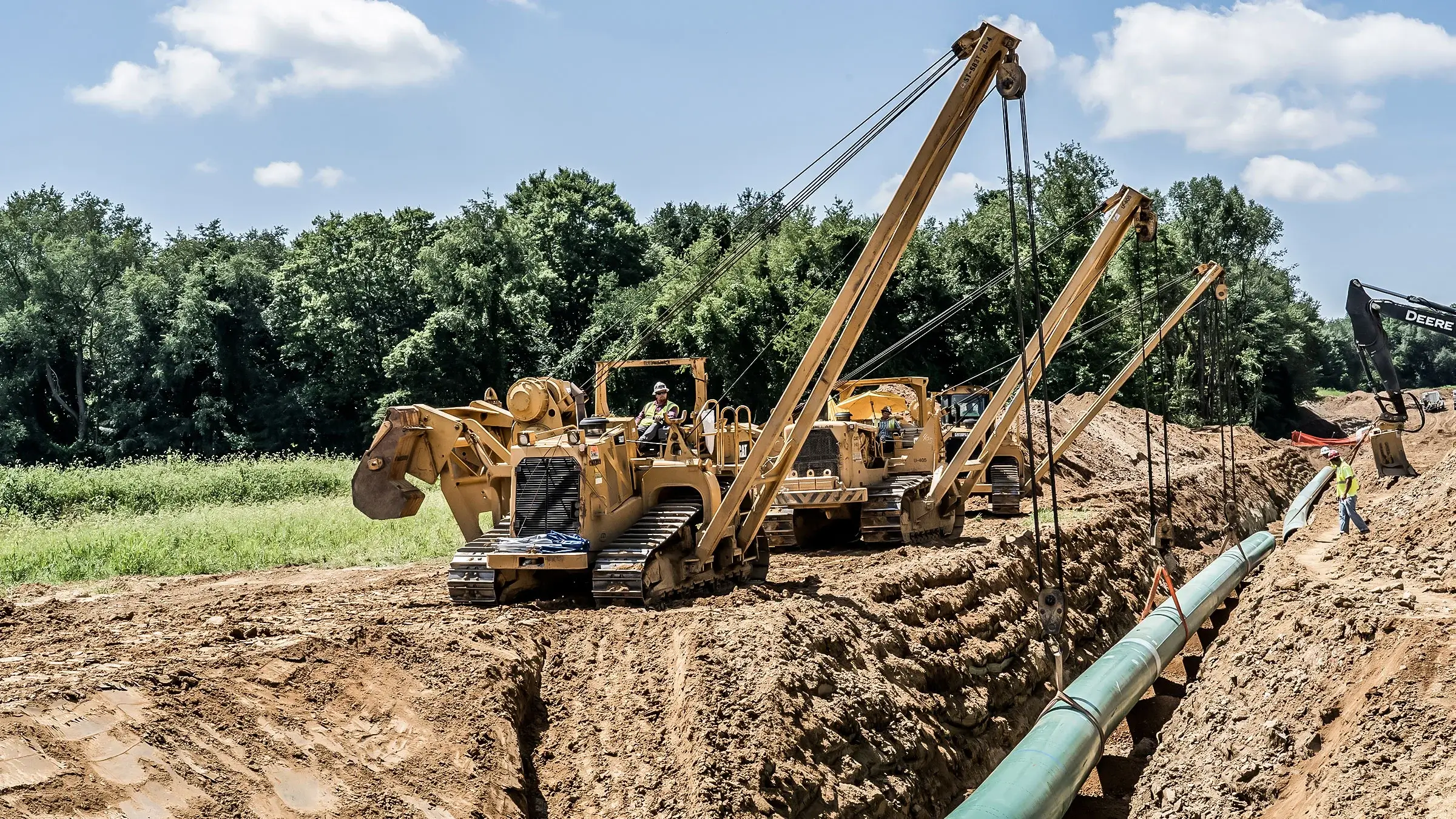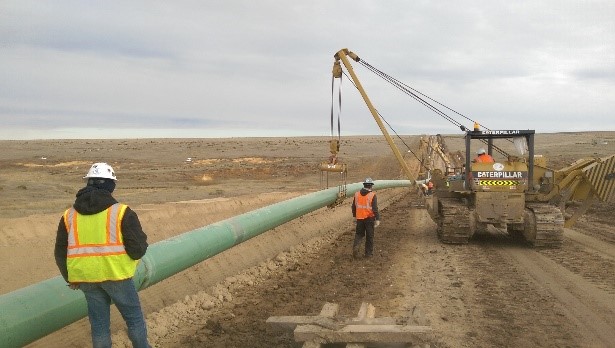Top 5 Costly Mistakes in Pipe Installations With Creek Pipe Company
Wiki Article
A Deep Study Pipes Installation: Important Aspects and Considerations for Successful Projects
Reliable pipe installation is an important element of engineering projects. It entails a series of factors, from material selection to accurate sizing and style. Each decision can significantly impact the system's efficiency and long life. Recognizing these elements is vital for avoiding costly blunders. Creek Pipe pipeline construction. As groups browse through the intricacies of installation, numerous essential considerations arise that warrant interest. What are the pivotal components that can make or break a piping project?Recognizing Pipe Materials and Their Applications
When selecting pipe products, one should take into consideration the certain applications and environmental problems they will encounter. Various products offer distinctive residential properties that cater to various demands. PVC is lightweight and immune to rust, making it optimal for water distribution systems. Conversely, steel pipelines supply stamina and sturdiness, suitable for high-pressure applications yet may call for protective coatings to stop rust.Copper pipes are favored for pipes due to their antimicrobial properties and simplicity of installation, while polyethylene is often utilized in below ground applications due to its versatility and resistance to cracking.The selection of material likewise rests on temperature extremes, chemical exposure, and installation area. For high-temperature applications, products like CPVC or PEX can be advantageous. Eventually, recognizing the qualities and constraints of each material aids in making notified decisions that improve system efficiency and durability.Importance of Proper Sizing and Style
Correct sizing and design of pipelines are important for making sure suitable flow prices and minimizing stress loss. These variables likewise play a considerable duty in establishing the compatibility of products made use of in the installation. A systematic approach to sizing and design can greatly boost the performance and long life of a piping system.Influence on Circulation Prices
Circulation prices in piping systems are critically influenced by the sizing and layout of the pipelines. Effectively sized pipelines assure that the liquid can relocate effectively, reducing turbulence and making the most of circulation capability. Large pipes can lead to reduced flow speeds, while undersized pipelines might restrict circulation, causing boosted rubbing and prospective blockages. The layout needs to likewise think about variables such as pipe product, internal surface area level of smoothness, and design, as these contribute to the overall performance of fluid transport. In addition, the plan of fittings and links within the system can affect circulation prices. Meticulous attention to pipe sizing and style is vital for optimizing circulation performance in any kind of piping installation project.Stress Loss Considerations

Exactly how can pressure loss greatly impact the performance of a piping system? Pressure loss is an essential element that can considerably diminish the performance of liquid transportation systems. When pipes are incorrectly sized or created, excessive pressure loss may happen, leading to reduced circulation prices and raised energy usage. This inadequacy can cause higher operational expenses and possible system failings. Correct sizing and design are necessary to decrease pressure loss, making sure that liquid characteristics continue to be perfect throughout the system. Engineers need to meticulously consider elements such as pipe size, size, and product to attain a reliable equilibrium. Inevitably, resolving stress loss throughout the design phase can enhance reliability and longevity, making it essential for successful piping projects.
Material Compatibility Factors
Stress loss is not the only factor that can affect the performance of a piping system; product compatibility also plays a substantial duty in overall effectiveness. Making certain that the materials made use of in a piping system work with the liquids they will certainly move is important. Different materials can respond detrimentally to different chemicals, resulting in deterioration, destruction, or contamination. This can inevitably jeopardize the integrity of the system and affect its longevity. In addition, appropriate sizing and design are necessary to suit thermal growth and contraction, which can better affect material efficiency. Evaluating variables such as temperature, pressure, and chemical make-up is critical in picking proper materials, thereby boosting system dependability and decreasing maintenance expenses in the long-term.Methods for Accurate Pipe Installation
Exact pipe installation is important for assuring system efficiency and longevity. Numerous techniques can improve the accuracy of this procedure. Careful measurement is vital; installers need to use quality tools such as laser levels and tape procedures to establish the exact lengths and angles required. Next, appropriate pipe reducing techniques, like utilizing a pipeline cutter rather of a hacksaw, guarantee clean sides that promote better connections. In addition, using positioning devices, such as pipe jigs, can notably boost precision during assembly. It is likewise suggested to take into account thermal growth; enabling adequate spacing and growth joints can avoid future misalignments. The installation team need to adhere to supplier standards to stick to particular recommendations related to each pipe kind. By implementing these strategies, the chance of leakages and system failures reduces, inevitably adding to an extra trustworthy piping system.Ensuring Pipe Alignment and Assistance
Appropriate alignment and assistance are critical to the honesty and performance of any piping system. Imbalance can result in increased stress and anxiety on joints, prospective leaks, and lowered effectiveness. To guarantee appropriate alignment, it is vital to make use of proper tools such as laser degrees and positioning evaluates. These instruments help attain specific positioning, ensuring that pipelines are installed in accordance with design specifications.Support systems must be made to fit thermal expansion and tightening, in addition to the weight of the pipes and their contents. Picking the ideal sort of supports, wall mounts, and brackets is important. Each should be set up at specified intervals to prevent drooping or undue anxiety on the pipelines. Regular assessments following installation can assist recognize any misalignments or indications of poor support. By focusing on alignment and assistance, one can significantly boost the sturdiness and functionality of the piping system.Typical Installation Mistakes to Prevent

Evaluating and Evaluation for High Quality Guarantee
The installation process may appear total, detailed testing and evaluation are important to making certain the long-lasting integrity of a piping system. Different methods are used to evaluate the integrity of the installation, consisting of pressure examinations, aesthetic evaluations, and non-destructive screening (NDT) methods. Pressure examinations verify that the system can withstand functional used vibratory roller for sale conditions without leaks, while aesthetic evaluations aid determine look these up any visible problems in the pipes or joints. NDT methods, such as ultrasonic or radiographic screening, supply insights into the material stability without jeopardizing the system.Additionally, documenting the testing results is vital for future reference and conformity with industry requirements. This documentation offers not just as a top quality assurance action but additionally as a legal secure. Inevitably, a complete testing and assessment protocol adds to the overall security and performance of the piping system, ensuring it satisfies the needed performance requirements over time.Maintenance Tips for Durable Pipe Solutions
Maintaining a pipe system calls for regular assessments and checking to determine possible problems before they intensify. Implementing reliable cleaning strategies is likewise essential for stopping buildup that can impede performance. Together, these techniques add to the durability and reliability of the piping framework.Routine Examinations and Tracking
Regular assessments and monitoring are necessary for ensuring the long life and efficiency of pipe systems. Routine analyses can help determine possible issues such as leaks, deterioration, or blockages before they escalate into considerable troubles. Executing a timetable for regular evaluations enables the very early discovery of wear and tear, allowing prompt repairs. Monitoring pressure levels and circulation prices can likewise provide beneficial understandings right into system efficiency, guaranteeing that any type of abnormalities are dealt with immediately. Additionally, making use of sophisticated modern technologies, such as infrared electronic cameras or ultrasonic screening, can enhance the inspection process by supplying detailed info concerning pipe conditions. Eventually, regular surveillance and inspections add to the integrity and durability of pipe systems, reducing the threat of expensive repair work and downtime.
Reliable Cleansing Methods
Effective cleansing methods are vital for maintaining the honesty and performance of pipe systems. Frequently scheduled upkeep, such as flushing systems with water, assists remove particles and build-up. For more stubborn blockages, professionals typically recommend hydro jetting, which utilizes high-pressure water to clean pipe insides completely. Chemical cleansers can likewise be utilized yet ought to be chosen carefully to stay clear of harmful pipes. On top of that, employing devices like pipe cams can help in determining trouble locations and making sure effective cleansing. Keeping appropriate drainage and staying clear of the disposal of dangerous compounds down pipelines further add to durability. Overall, regular cleansing methods not only boost efficiency however likewise decrease the threat of expensive repair work in the future.Often Asked Concerns
What Are the Labor Costs Related To Pipe Installation Projects?
Labor pipe specialist expenses for pipe installation jobs differ commonly, influenced by variables like task complexity, regional wage prices, and called for abilities (Creek Pipe trenching services). Typically, these prices can vary from $50 to $100 per hour, relying on the labor force includedHow Do Regional Rules Affect Pipe Installation Practices?
Local policies greatly influence pipe installation methods by developing safety and security requirements, product specs, and installation techniques. Compliance with these laws guarantees task security, environmental management, and adherence to regional codes, eventually influencing overall project success and expenses.What Devices Are Important for Pipe Installation?
Crucial tools for pipe installation consist of monkey wrench, cutters, and fittings. In addition, sealants, determining tapes, and levels guarantee precision and toughness. Correct equipment promotes performance and adherence to security criteria throughout the installation process.Just How Can Weather Condition Conditions Influence the Installation Refine?
Climate conditions greatly affect the installation process, as extreme temperatures, rainfall, or wind can influence material stability, employee safety, and project timelines. Appropriate preparation and organizing are essential to mitigate these potential challenges throughout installation.Exist Service Warranties for Set Up Pipe Solutions?
Guarantees for mounted pipe systems frequently vary by supplier and installation specialist. Usually, they cover defects and craftsmanship for a specified duration, guaranteeing the system's integrity and supplying peace of mind to the homeowner.Report this wiki page